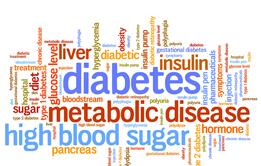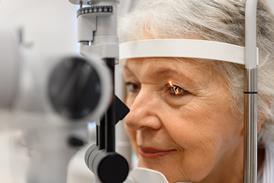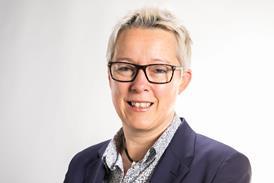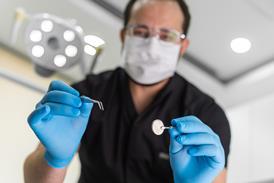In March 2022, NICE updated its recommendations on the management of diabetes in adults. The new guidelines recommend there should be broader access to intermittently scanned continuous glucose monitoring devices. So how can ICSs deliver on this? Claire Read reports

For Pratik Choudhary, the idea of continuous glucose monitoring for those with diabetes is far from a new interest. “CGM has been around for a long time,” explains Professor Choudhary, a clinician academic who is professor of diabetes at the University of Leicester; chair of the Diabetes Technology Network-UK; and the clinical lead for type 1 diabetes across the Midlands.
“I’ve been doing research into CGM and using it since the early 2000s. My thesis in 2002 used CGM to look at whether tablet-treated or insulin-treated patients had different rates of hypoglycaemia.”
In association with
What is new, however, is how widely it should be available to patients. In March 2022, the National Institute for Health and Care Excellence updated its guidelines on the management of both type 1 and type 2 diabetes. The guidelines say that more people living with the condition should have access to so-called flash glucose monitoring devices (intermittently scanned continuous glucose monitoring, or isCGM).
When using such a system, people with diabetes wear a small sensor on the back of the upper arm. This stores up to eight hours of continuous glucose data, removing the need for regular finger prick blood tests. Through scanning the sensor with a smartphone or handheld reader, the data is transferred to an app which provides a continuous record of glucose levels. Clinicians can then access this data online and offer management advice remotely.
Such devices have been increasingly used in type 1 diabetes. But the latest NICE guidelines recommend they should now be available for all people with type 1, and to many of those with type 2 who need multiple daily insulin injections.
“We’ve been involved in prescribing it for some time in type 1 diabetes,” says Patrick Holmes, primary care diabetes lead for North East and North Cumbria Integrated Care System’s diabetes network and a practising GP. “But it has been signposted that this was the direction of travel – increasing access to everybody with type 1 diabetes, and through to other groups who have similar challenges in type 2 diabetes.”
That means a task for the newly statutory ICSs: working out how to deliver on the increased access NICE recommends.
In North East and North Cumbria ICS, access to flash monitoring as per the NICE guidelines has “already been approved through the various committees,” Dr Holmes says. But he is clear this does not mean the job is complete.
“There is a broader process which is really important to our integrated care board, which is about health inequalities: how do we address health inequalities when it comes to access to technology. In all honesty, that’s still a piece in progress. I don’t think we’ve completely bottomed that one out, but it’s right at the top of the agenda in terms of how we implement all guidelines.”
It is in some ways a particularly complicated issue in North East and North Cumbria, given geographically it is the largest ICS in the country. “We’ve got some of the most deprived wards in England in Tees Valley, in Middlesborough. But we’ve also got very rural areas such as Northumberland and North Cumbria. We’ve got old mining communities, which also often live in rural areas.”
It’s a case of looking at one’s own area and saying: “How do we increase access to this technology and use it to transform services?”, and then building on the networks that already exist
In a previous role at a local foundation trust (he worked as a GP with a special interest in diabetes), Dr Holmes saw the impact of these differences. “It was in quite a rural area of County Durham and you would have people who, because of local transport, would literally have to take a full day off work to get to the hospital. If you lived in that sort of area diabetes outcomes weren’t as good as if you lived in the centre of Newcastle or centre of Durham, because of the difficulty in getting access to specialist care.”
Flash glucose monitoring offers a potential means of addressing that sort of issue. That’s because, increasingly, it is being initiated in primary care rather than secondary care settings. This can increase ease of access.
Notably NICE’s new type 2 guideline is not prescriptive on where the use of such technology should be initiated, simply stating that CGM “should be provided by a team with expertise in its use, as part of supporting people to self-manage their diabetes”. This would mean primary care would be a viable option.
Like every other part of the system, primary care is of course under extreme pressure. It’s something that Professor Choudhary recognises, but his belief is also that the underlying networks to manage this change are often already in place.
“As diabetes [rates] expanded, we moved insulin initiation from secondary care into primary care and we built in those processes; we built in that infrastructure of community nurses, intermediate care, specialist GPs who take on some of these actions.”
For Dr Holmes, thinking about such infrastructure is key to ensuring equal – and deliverable – access across North East and North Cumbria ICS. “Some areas are already in a position where they have been working with manufacturers [to implement flash glucose in primary care],” he says. “Those teams are already mature and it will be the same people looking after type 1 as type 2, so they don’t actually need a great deal of help. But we’ve got different models across the region, so it’s fair to say there’s a bit of variation.”
His personal view is that it’s less a case of making sure every practice can initiate flash glucose monitoring for all those covered by NICE guidelines, and more that every primary care network can.
However individual ICSs ultimately address the issue, the argument for doing so is clear. “With NICE guidance we’ve got a robust appraisal of the evidence and [clarity] that it’s cost effective,” concludes Dr Holmes. “So I think it’s a case of looking at one’s own area and saying: ‘How do we increase access to this technology and use it to transform services?’, and then building on the networks you’ve got.”
Topics
How can ICSs widen access to innovative diabetes management?

In March 2022, NICE updated its recommendations on the management of diabetes in adults. The new guidelines recommend there should be broader access to intermittently scanned continuous glucose monitoring devices. So how can ICSs deliver on this? Claire Read reports
 Currently
reading
Currently
reading
How can ICSs widen access to innovative diabetes management?
- 2





























